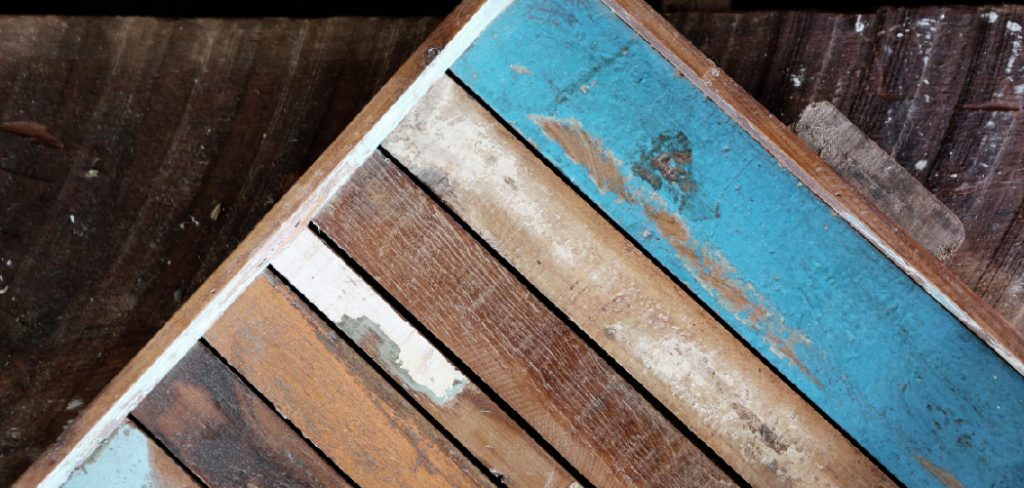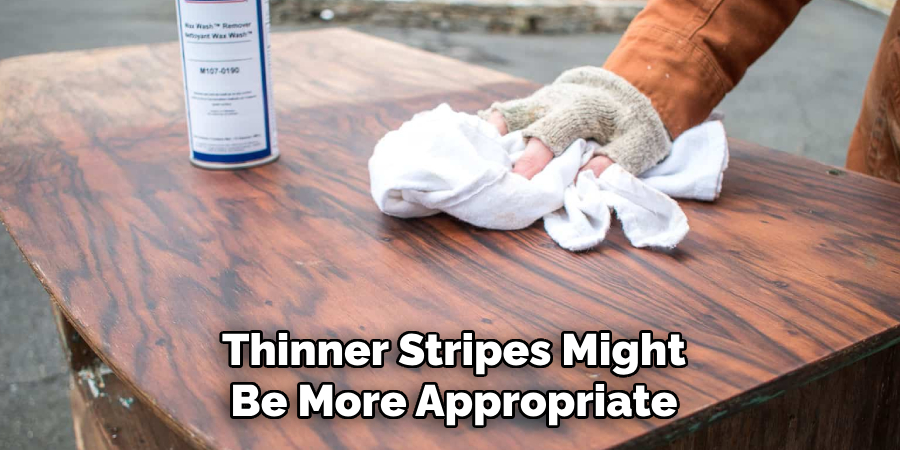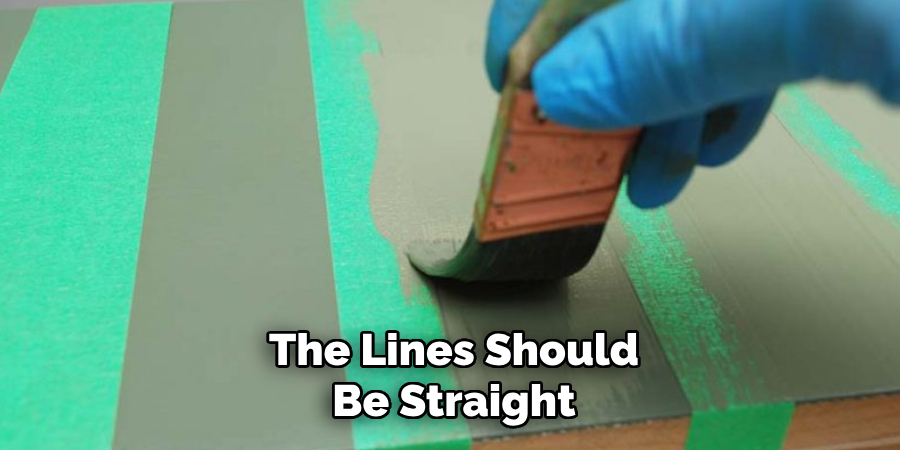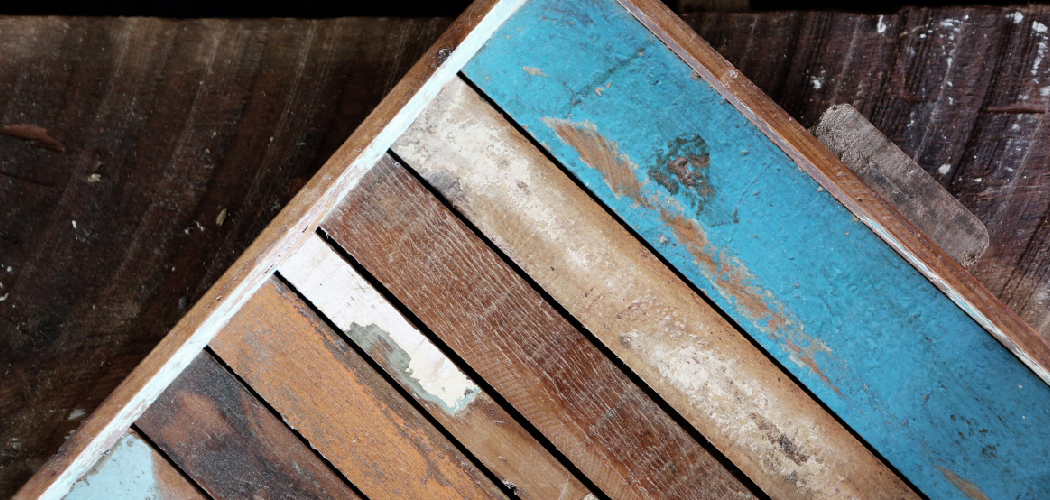Painting stripes on wood furniture is an increasingly popular DIY project, offering a chic and fashionable way to rejuvenate any household piece. This simple yet effective technique allows savvy decorators to infuse their personal style into furniture by adding dynamic visual interest. Stripes can transform a mundane piece into a dazzling showstopper, enhancing the overall design with just a few thoughtful strokes.
The benefits of adding stripes extend beyond mere aesthetics; they serve as an avenue for customization, enabling homeowners to discernibly make their mark with bold patterns or subtle accents. This article aims to equip readers with a comprehensive guide on how to paint stripes on wood furniture, ensuring a professional-looking finish each time.

By delving into the nuances of this creative process, readers will gain the confidence and knowledge needed to embark on their own artistic adventures, transforming their furniture into beautifully personalized works of art.
Choosing the Right Tools and Materials
Required Tools
Having the right tools at your disposal is crucial to achieving beautifully striped wood furniture. Essential tools include painter’s tape, which is vital for creating sharp, clean stripe edges.
Paintbrushes or rollers allow you to apply paint precisely and efficiently, catering to the size of the painted area. A sanding block helps prepare the surface by smoothing out any imperfections, ensuring a flawless base for painting. Using a ruler and a level is key to maintaining straight, evenly-spaced lines, giving your project a professional finish. Each tool plays a significant role in ensuring the best results for your striped design.
Choosing Paint Types and Colors
Selecting the appropriate paint type for your wood furniture is vital for durability and aesthetics. Recommended paint options include latex, acrylic, or chalk paint, known for their strong adhesion and smooth finish.

Consider contrasting hues to create a bold statement or complementary tones for a more harmonious appearance when it comes to color choices. Experimenting with different color combinations can enhance the appeal of your striped design, allowing you to personalize your furniture while achieving a dynamic visual effect. A thoughtful selection of paints will ensure a long-lasting, stunning finish on your furniture.
Preparing the Wood Surface
Cleaning and Sanding
Proper wood surface preparation is crucial for achieving a polished and long-lasting stripe pattern on your furniture. Begin by thoroughly cleaning the piece to eliminate any dust, dirt, or grease that could affect paint adhesion. Use a mild detergent with water and a soft cloth to gently wipe down the surface, ensuring all residues are removed. Once clean, sanding becomes essential to create a smooth, even surface.
Utilize a medium-grit sanding block to meticulously sand the entire piece, focusing on any rough areas until you achieve a flawless base for painting. This step is fundamental for ensuring the paint adheres evenly, and the stripes appear crisp and professional.
Applying a Base Coat
After the surface is clean and smooth, it’s time to apply a base coat, which serves as the foundation color for your stripes. Choose a high-quality, neutral, or complementary color for this layer, as it will enhance the overall appearance of your final design. Apply the base coat using a brush or roller, ensuring even coverage across the entire piece. Working in thin, even layers is important to prevent drips or streaks. Following the manufacturer’s instructions, allow ample drying time between coats to ensure the paint is fully cured and ready for the next steps in your striped design process.
Planning and Marking the Stripe Pattern
Deciding on Stripe Width and Placement
When planning the stripe pattern for your wood furniture, the size of the furniture and your design preferences play vital roles in the decision-making process. Carefully consider the width of the stripes and the spacing between them. For larger pieces, wider stripes may create a bold, balanced look, while narrow stripes can add delicate detail. Conversely, thinner stripes might be more appropriate for smaller furniture to avoid overwhelming the piece.

Visualizing the pattern before applying it is crucial for achieving your desired look. Utilize sketches or digital design tools to conceptualize different arrangements. Additionally, measuring tools are invaluable for plotting accurate stripe placement, ensuring your design complements the dimensions and shape of the furniture.
Marking the Pattern with Painter’s Tape
Once your stripe pattern is determined, it’s time to transfer it onto your furniture using painter’s tape. Begin using a ruler and level to measure and mark each stripe’s starting and ending points with a pencil. This ensures precision and consistency across your design. Carefully apply painter’s tape along these lines, pressing down firmly to secure the edges and prevent paint seepage.
The lines should be straight and evenly spaced, so double-check with the level throughout the process. Continue marking out each stripe’s boundary until the pattern is complete. This meticulous approach guarantees sharp, clean edges and a professional appearance once the paint is applied, giving your furniture a polished, customized finish.
How to Paint Stripes on Wood Furniture: Painting the Stripes
Applying Paint Within the Taped Areas
Once your stripe pattern is taped off, the next step is to apply paint within the designated areas. To achieve sharp, smudge-free edges, applying the paint carefully to avoid bleeding under the tape is essential. Use a small roller for larger stripes, ensuring smooth and even coverage without streaks.

For narrower sections, an angled brush offers better precision and control. Start by gently loading the brush or roller with a moderate amount of paint, and apply with light, steady strokes. Begin at the tape’s edge and work away from it, which helps prevent paint from seeping under the tape. This meticulous application process will ensure each stripe is clearly defined and professional.
Adding Multiple Coats and Removing the Tape
For the best results, allow the first coat of paint to dry completely before applying additional layers. This helps build solid, even color coverage, minimizing visual inconsistencies. Follow the paint manufacturer’s instructions regarding drying times to ensure effective curing between coats. Once the final coat is dry to the touch, it’s time to carefully remove the painter’s tape.
Pull the tape at a shallow angle away from the painted edges to prevent any peeling or tearing of the newly applied paint. This should reveal crisp, clean lines that enhance the aesthetic appeal of your furniture. Taking patience and care throughout this removal process will contribute to the polished look you’ve worked hard to achieve.
Creating Special Effects or Variations
Adding Distressed or Faded Stripes
To achieve a distressed, vintage look on your striped furniture, lightly sand over the painted stripes once they have fully dried. Use a fine-grit sanding block or sandpaper, focusing on the edges or areas where natural wear typically occurs. This technique subtly removes some of the paint, giving each stripe a charmingly aged appearance. For a more rustic finish, maintain consistent pressure and movement while sanding to ensure an even and subtle fade. This method will create a cohesive look that enhances the rustic charm of your furniture.
Using Metallic or Glitter Paints for Accents
Adding metallic or glitter paints to your striped design can add a stylish, modern twist. Opt for metallic tones like gold, silver, or bronze to introduce a touch of elegance. These paints can be selectively applied to certain stripes or details to create visual depth and accentuate primary colors. Similarly, glitter paints add sparkle and dimension, making your furniture a standout piece. To create balance, apply these accents sparingly, ensuring they highlight rather than overwhelm the overall design. This approach can transform simple stripes into a sophisticated visual statement.
Sealing and Protecting the Painted Finish
Applying a Clear Topcoat
Applying a clear topcoat is essential in preserving your painted furniture, ensuring it maintains its striking appearance. A protective topcoat acts as a barrier against chips, scratches, and everyday wear, significantly extending the life of your design. For optimal durability, consider using a water-based polyurethane, which is known for its quick drying time and low odor. Alternatively, a wax finish can provide a soft sheen and additional protective layer. Whichever option you choose, apply the topcoat evenly with a brush or roller, following the wood grain for a seamless finish.

Final Drying and Curing Tips
Once the topcoat is applied, allowing ample time for drying and curing is crucial to ensure a lasting, resilient finish. Follow the manufacturer’s instructions for drying times, considering that environmental factors such as humidity can affect this process. Typically, furniture should be left undisturbed for several days to allow for full curing. During this period, handle the furniture with care, avoiding placing heavy objects on it or dragging it across surfaces. This cautious handling will prevent potential damage while the sealant achieves its maximum hardness, thereby safeguarding your hard work and preserving the beauty of your striped furniture.
Conclusion
Painting stripes on wood furniture can transform a simple piece into a striking work of art. You can ensure clean, professional results by following the key steps—measuring and marking your pattern, applying painter’s tape with precision, painting carefully within designated areas, and protecting the finish with a top coat. Feel free to experiment with different stripe patterns, colors, or special effects to make your furniture uniquely yours. Remember, meticulous attention to each part of the process is vital to successfully learning how to paint stripes on wood furniture. With patience and creativity, you’ll enjoy your beautifully customized piece.

